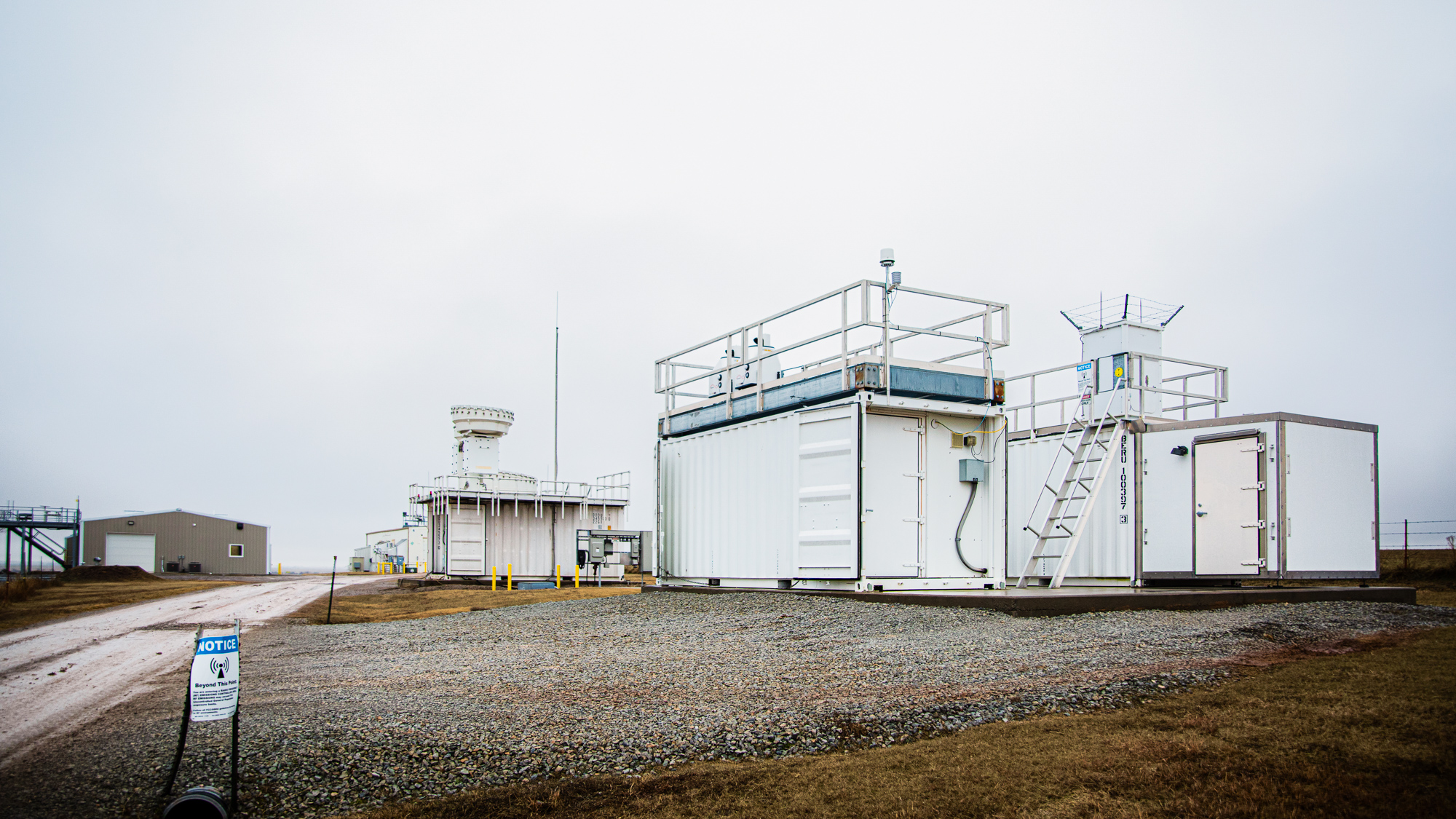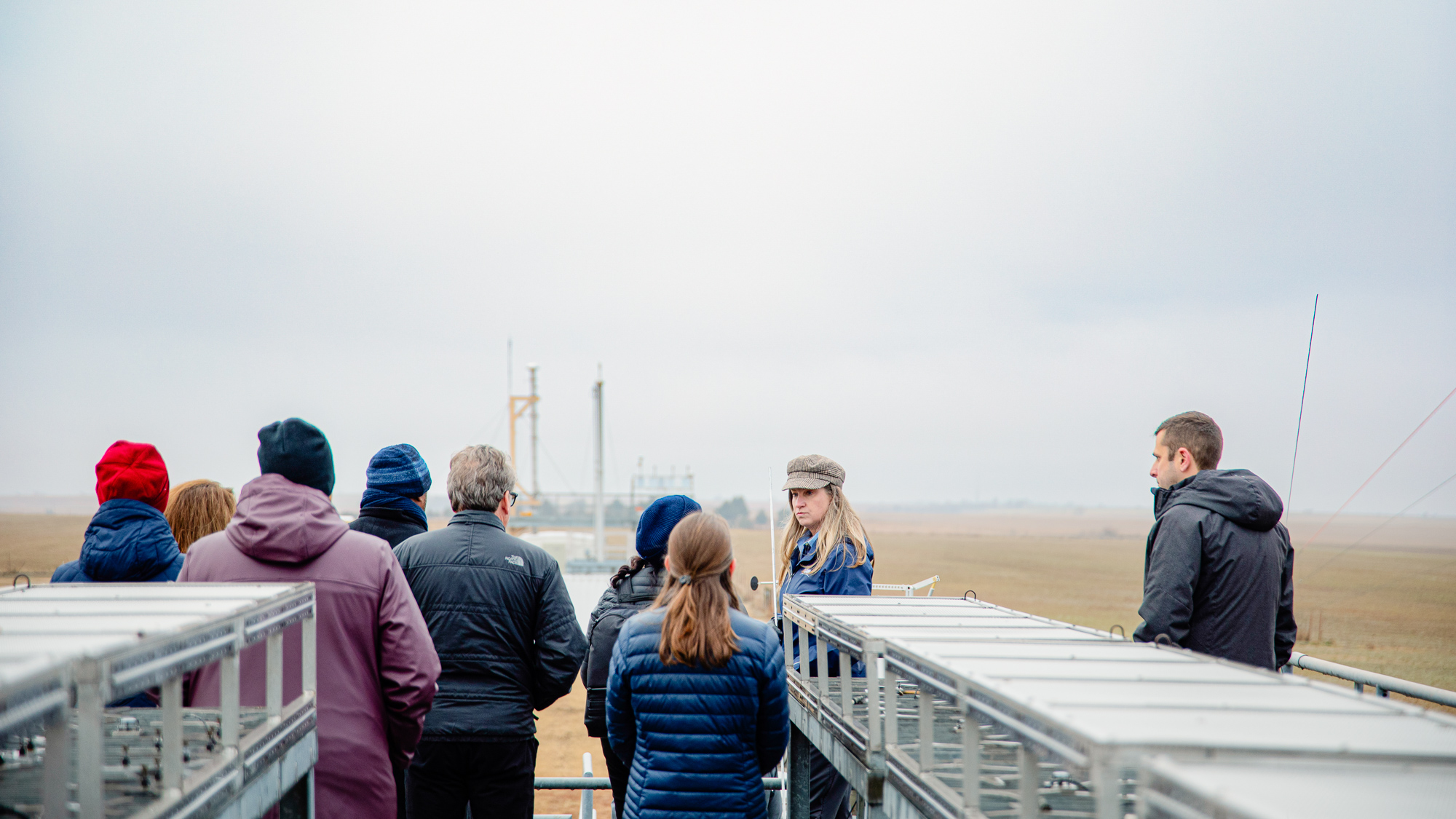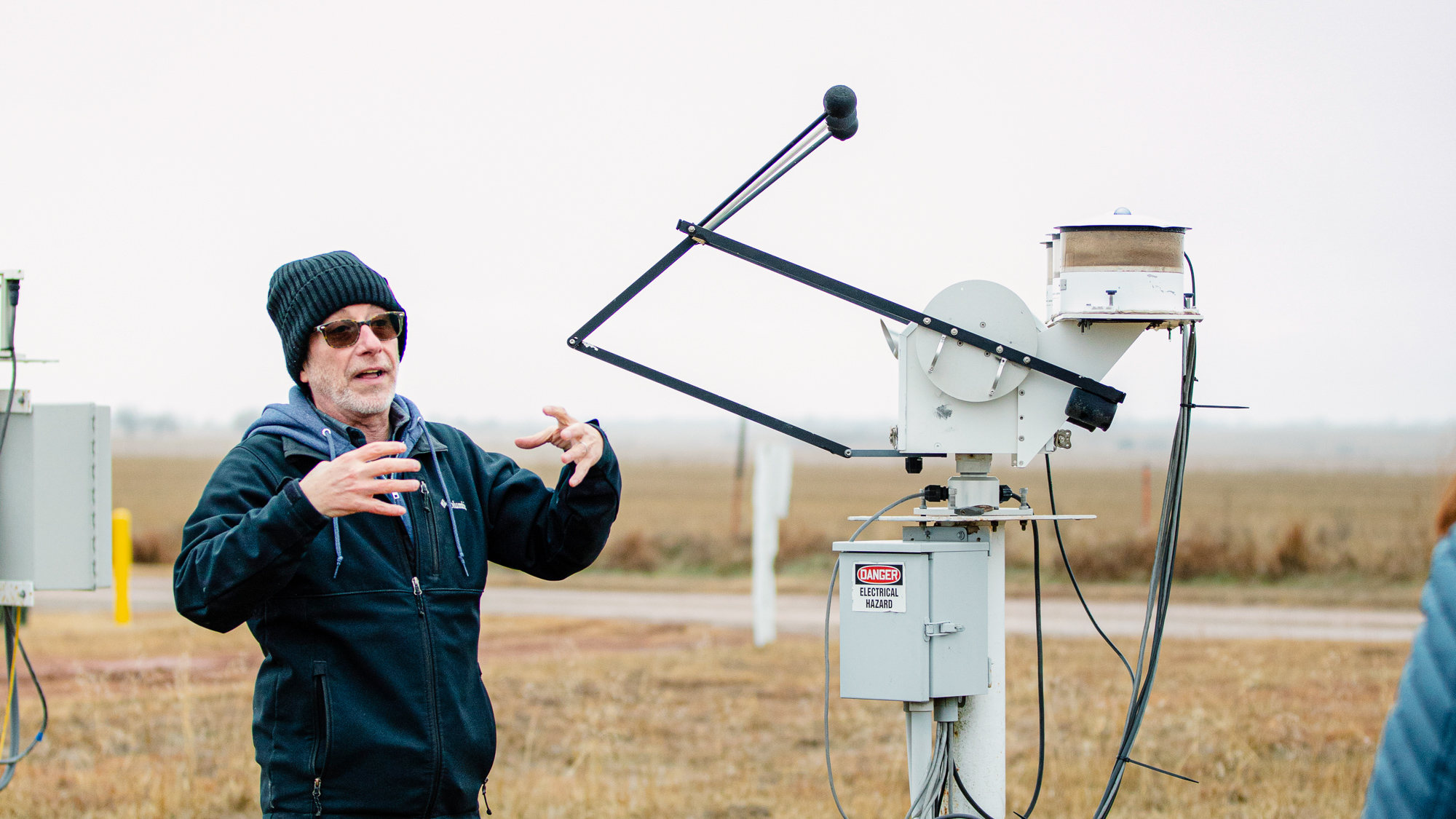Editor’s note: The original version of this story by Marguerite Huber appeared on the Argonne National Laboratory website.
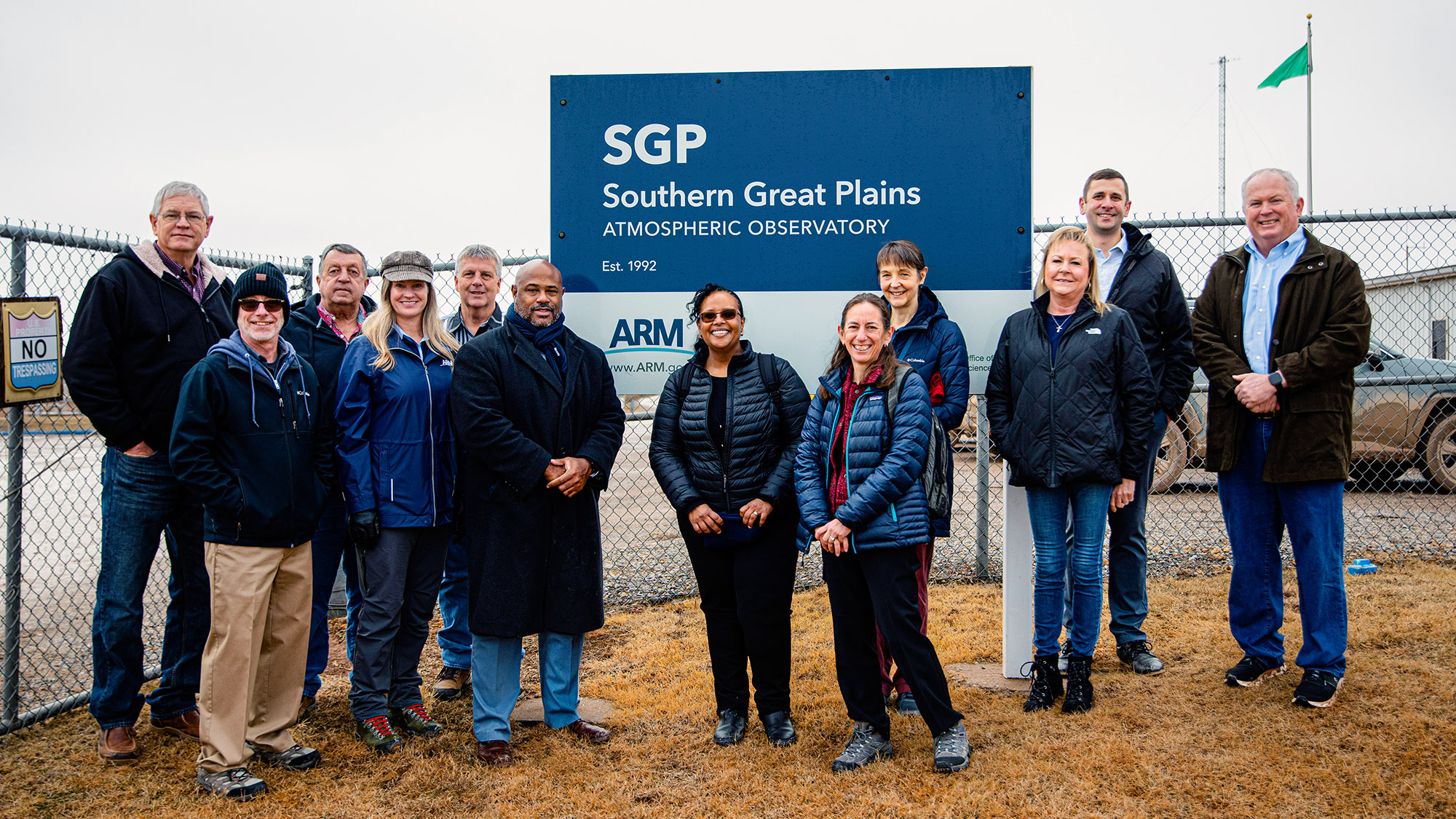
Nestled on 160 acres of cattle pasture and wheat fields sits the heart of the Southern Great Plains (SGP) atmospheric observatory, the first field measurement site established by the U.S. Department of Energy (DOE) Atmospheric Radiation Measurement (ARM) user facility. Nine DOE national laboratories collaborate to manage ARM’s work, and DOE’s Argonne National Laboratory is responsible for the SGP and third ARM Mobile Facility (AMF3) sites.
The SGP, centered near Lamont, Oklahoma, is the world’s largest and most extensive climate research facility. Established in 1992, it currently operates around 90 ARM instruments, with year-round support for guest researchers’ instrumentation. Radars, surface meteorological instrumentation, and many other instruments make high-quality data available for atmospheric scientists worldwide through the ARM Data Center.
On a muddy, overcast day in January 2024, DOE Office of Science Director Asmeret Asefaw Berhe joined other DOE officials, representatives from Argonne and several other national laboratories, and ARM leaders, including DOE ARM Program Manager Sally McFarlane, for a tour of instrumentation at the SGP Central Facility. Dorothy Koch, associate director of the DOE Office of Science’s Biological and Environmental Research (BER) program, also participated in the tour.
Their day began with a crash course in ARM and the six ARM observatories, their instrumentation, how data are collected, and how they are disseminated to users. They also learned more about what activities occur at the SGP and how it supports other ARM sites, users, and field campaigns.
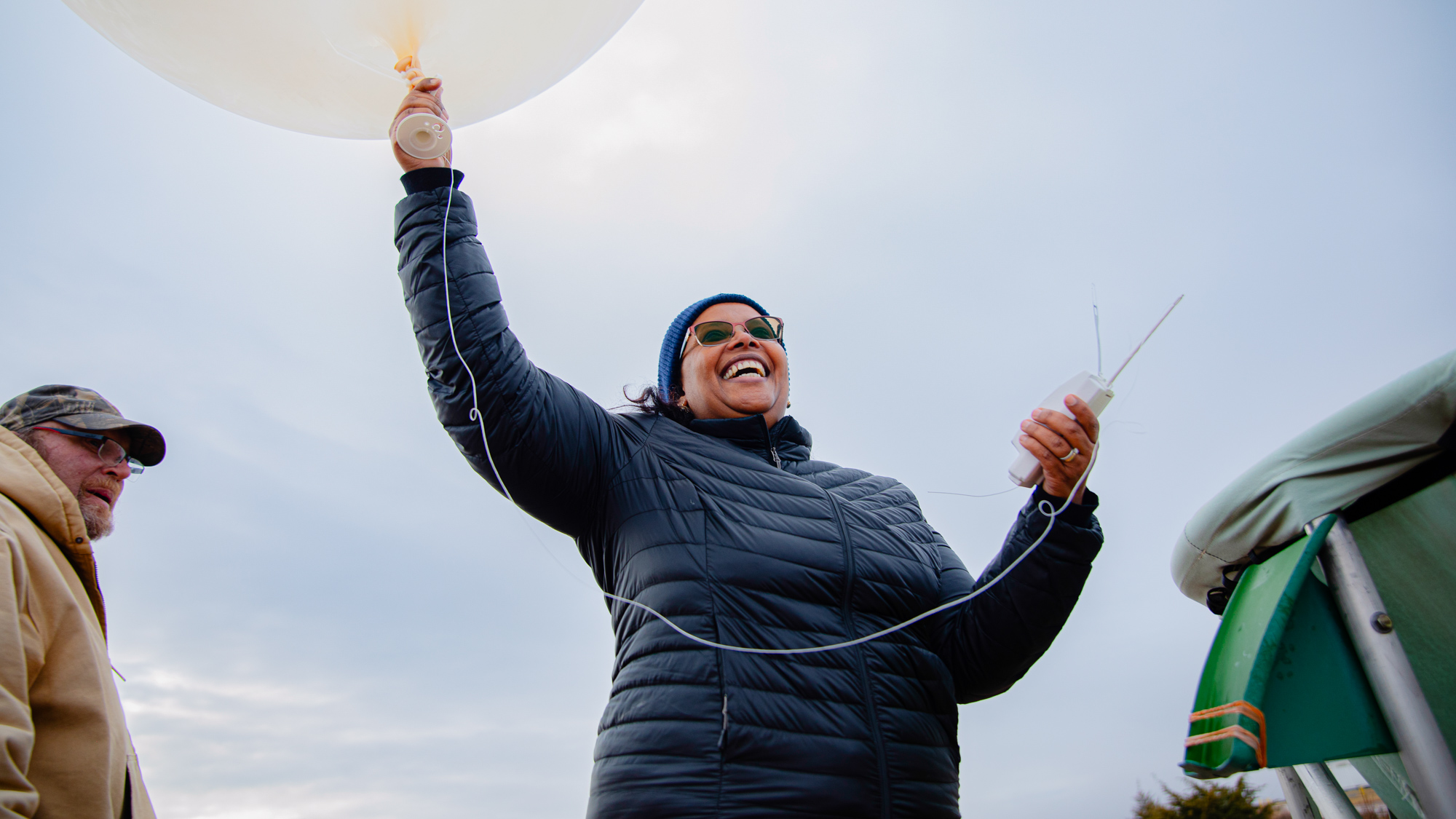
“Overall, this was a great opportunity to showcase the effort it takes to operate ARM’s largest and longest-serving atmospheric observatory and the dedication of the staff to ARM’s mission,” said Argonne’s Adam Theisen, ARM’s instrument operations manager. “This was a truly unique experience, and we were happy to have DOE and laboratory management involved to tour this one-of-a-kind facility.”
After learning about ARM, the visitors were given a muddy walking tour of the SGP. They learned about the challenges of operating the site in a remote location and saw firsthand the difficulties staff have in getting to work on rural dirt and gravel roads. On the tour, they discussed instrumentation and how the larger ARM user facility operates. The group was able to get up close with instruments such as the two-dimensional (2D) video disdrometer, which measures the size and shape of raindrops. Berhe was even able to launch a weather balloon that measures profiles of temperature, humidity, and wind.
“ARM is a lot more than just operating instrumentation for a temporary period of time,” said Argonne’s Nicki Hickmon, ARM’s associate director for operations. “Through our complex user facility, we bring together ARM and scientist observations from significant climate regimes to any interested person free of charge. Currently, we host over four petabytes of data available to users.”
The visitors wanted to learn more about how ARM partners and collaborates with universities and colleges. The service-oriented nature of DOE user facilities lends natural support to outreach opportunities by making data freely available, explained Hickmon. ARM brings together instrument experts, data scientists, data analysts, and scientists from diverse disciplines, such as agriculture, aerospace engineering, soil and atmospheric chemistry, and many more.
“Our cutting-edge work at SGP and ARM will provide the needed data for better weather models,” said Sean L. Jones, Argonne deputy laboratory director for science and technology. “Visiting SGP was a remarkable experience, providing an insightful glimpse into the pivotal role it plays in advancing climate research.”
The ARM user facility is funded by BER.
|
|
|
|
|
|
ARM is a DOE Office of Science user facility operated by nine DOE national laboratories, including Argonne National Laboratory.



